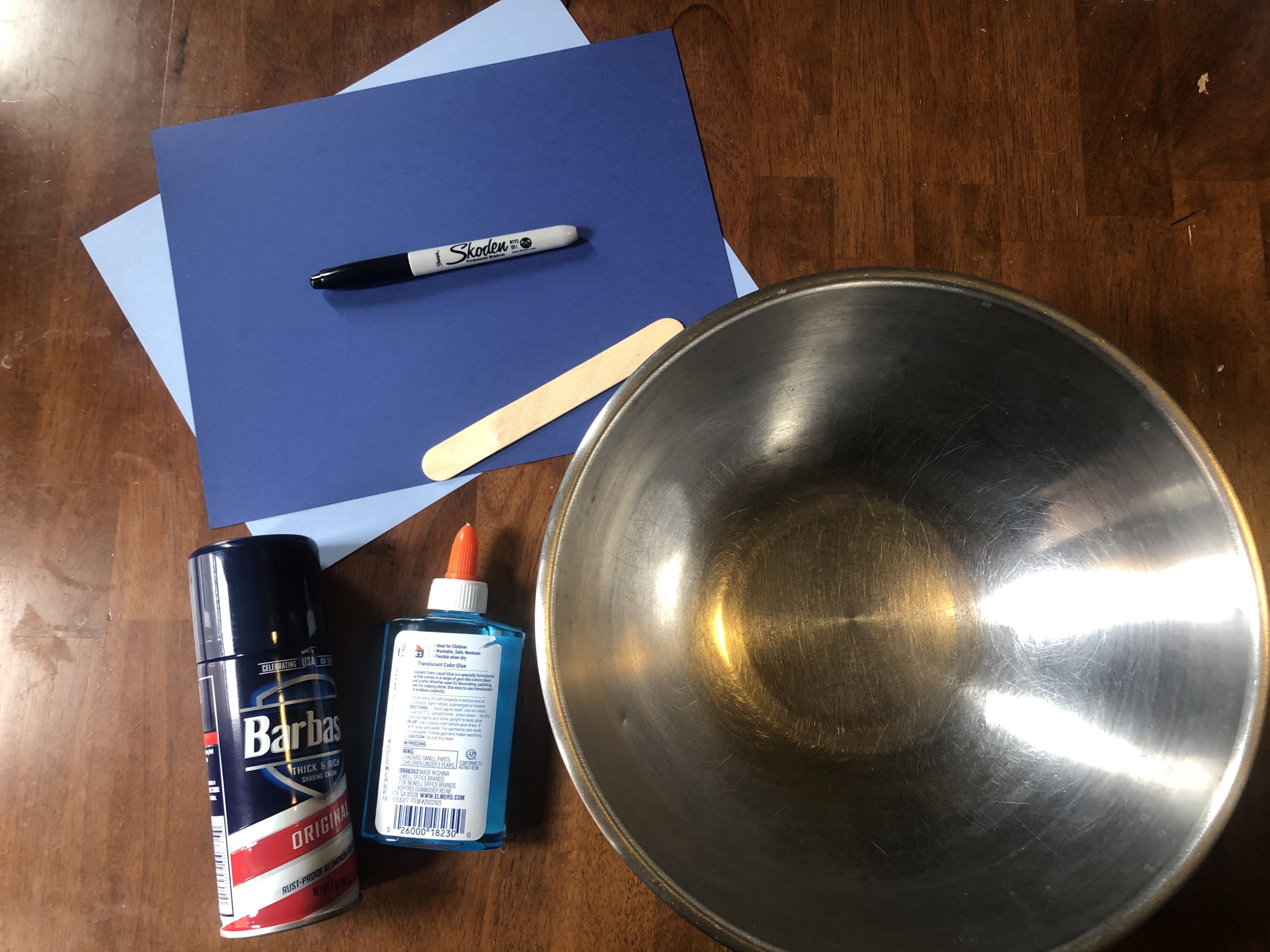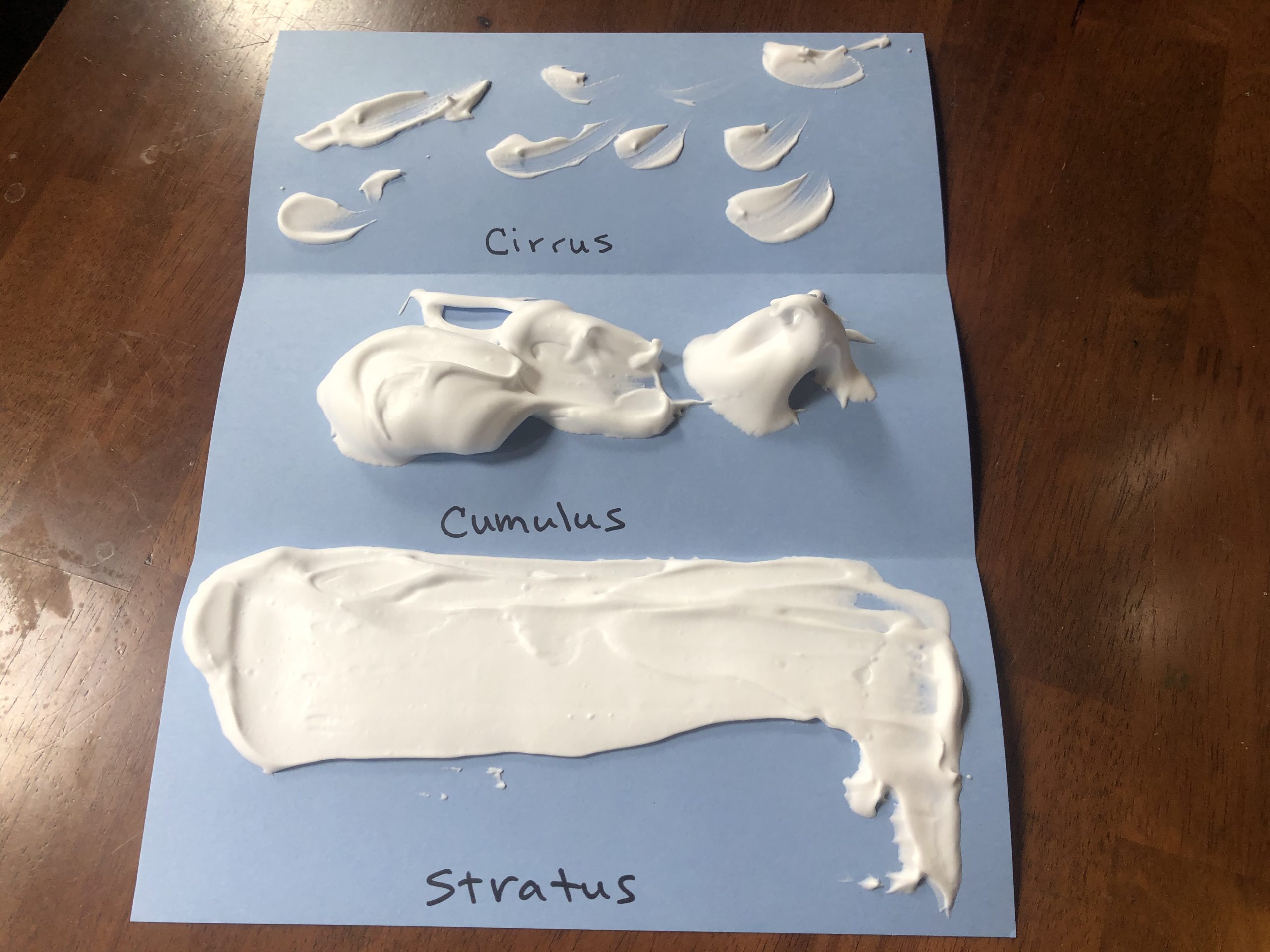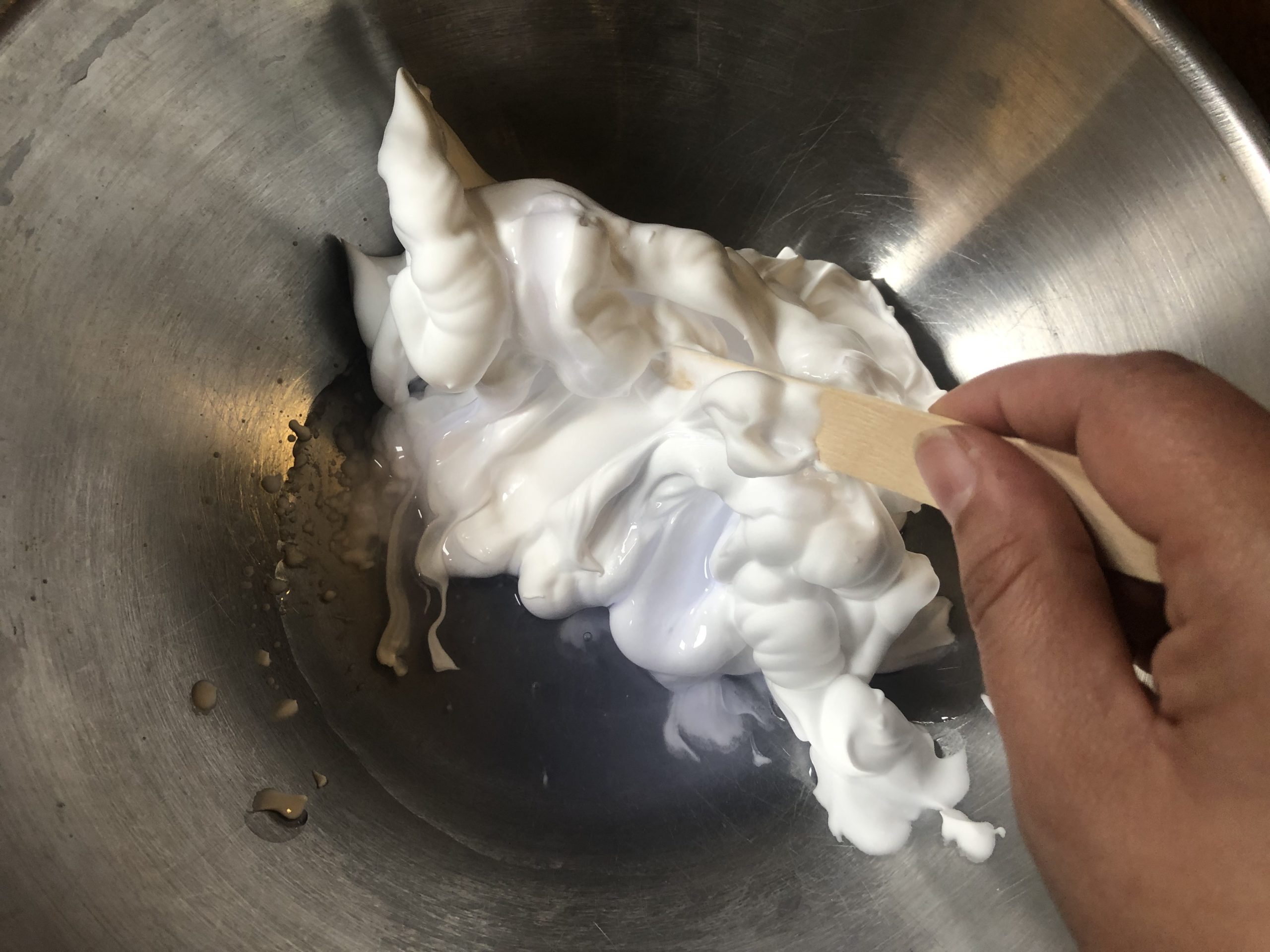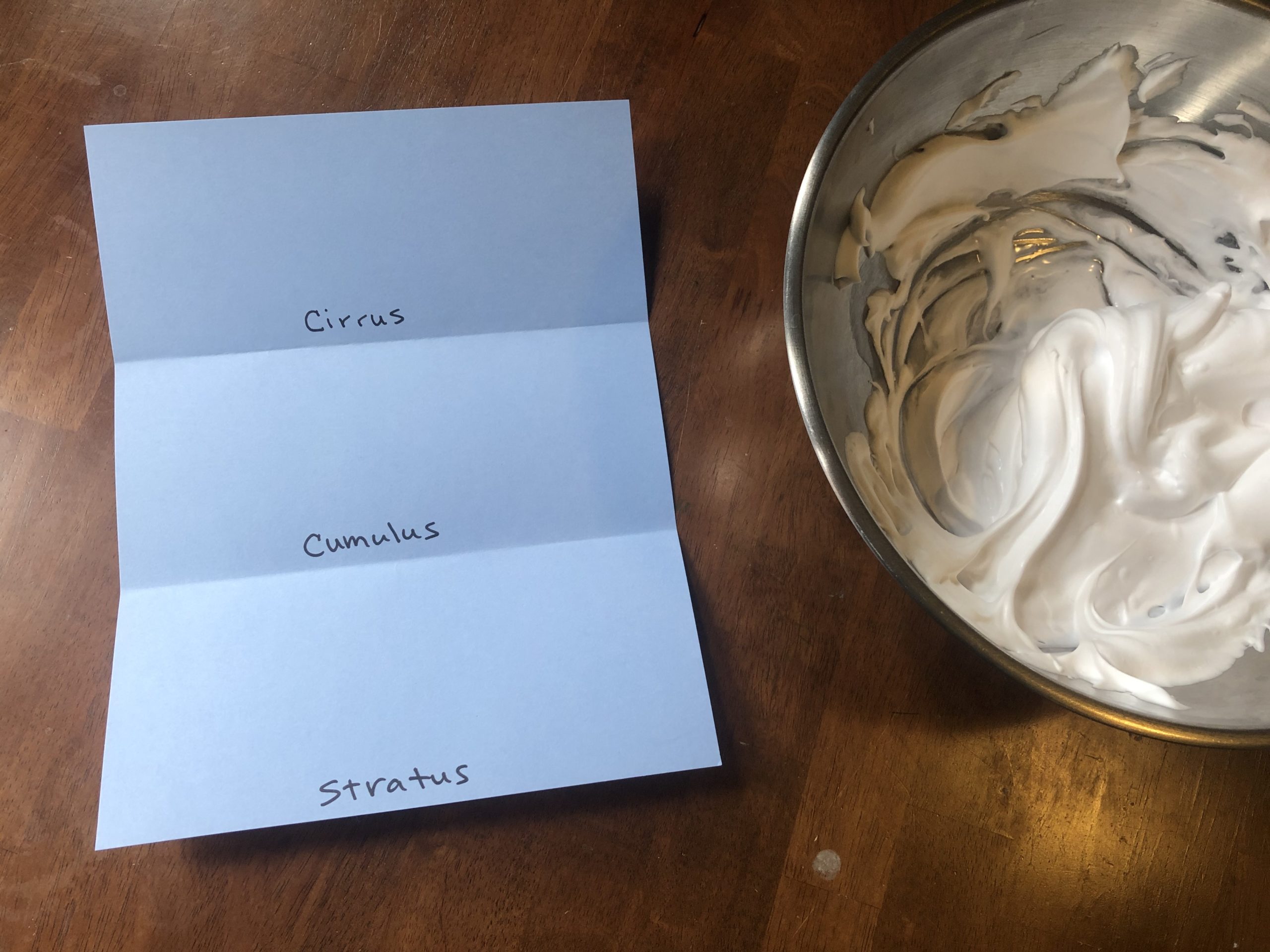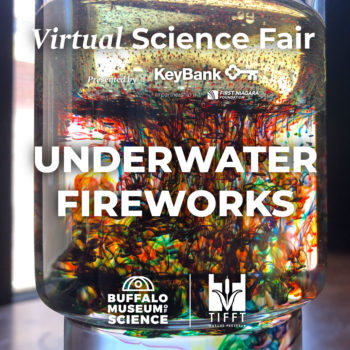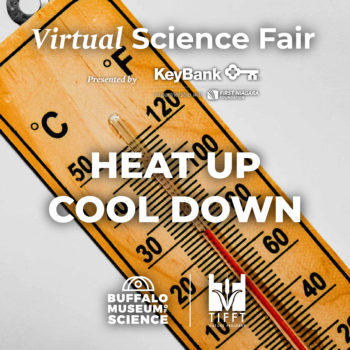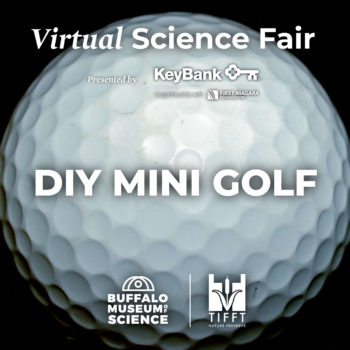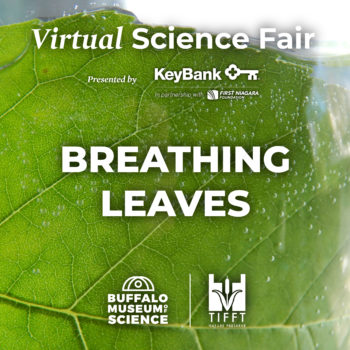Cloud Painting

Have science fun as a family! Complete activities with parental supervision.
Materials:
- 1/4 cup glue
- 3/4 shaving cream
- Mixing bowl
- Mixing spoon or a large craft stick
- A paintbrush or large craft stick
- Dark colored construction paper or cardstock
- Marker or crayon
Procedure
- First, take a walk or look outside of a window at the clouds. What do they look like today?
- Add the glue and shaving cream to a bowl. Carefully mix, folding the glue into the shaving cream so you won’t pop the bubbles in the shaving cream.
- Take the paper or card stock and fold it in thirds.
- (Optional) Label the three sections of the card stock. The top is Cirrus, the middle is Cumulus, and the bottom is Stratus.
- Use the paintbrush or craft stick to paint the following:
- Top Section—These are Cirrus clouds. They are very thin and wispy, almost like feathers. They occur high up in the atmosphere.
- Middle Section—These are Cumulus clouds. These are the big puffy ones that you usually think of when you think of clouds. They occur in the middle of the atmosphere.
- Bottom Section—These are Stratus clouds. These low clouds are thick and cover the whole sky.
- Place your work in a safe place to dry. Yes—the “paint” should become puffy! Once it’s done, proudly display it!
- Be sure to take a picture or video to share in the Facebook comments on the Buffalo Museum of Science or Tifft Nature Preserve pages!
What’s it all about?
Clouds are made of tiny droplets of water. They form as warm air rises in the atmosphere. When they rise, they cool down and condense (turn into a liquid) onto the surface of particles in the air.
This activity focuses on the three main shapes of clouds: cirrus, cumulus and stratus.
Cirrus clouds are high level clouds that are thin and wispy. They form above 20,000 feet in the atmosphere and appear during good weather.
Cumulus clouds are big and puffy clouds. They occur in low or mid-level areas of the atmosphere. If they are in the mid-level area, they are called altocumulus. If they are low-level, they are called stratocumulus. They typically signal good weather, but can also develop into stormy cumulonimbus clouds.
Stratus clouds are low-level clouds that cover the whole sky—sort of like a huge blanket. They look grey because of the why the light passes through it and can produce light rain or snow.
Try It!
- Over the next week, take a peek at the sky. What kind of clouds to you see? Do certain clouds occur during certain types of weather conditions?
- Puff paint isn’t just for clouds—it’s great for other projects too! Add food coloring or watercolor paint for different colors!
